How to Read Conductor Gestures
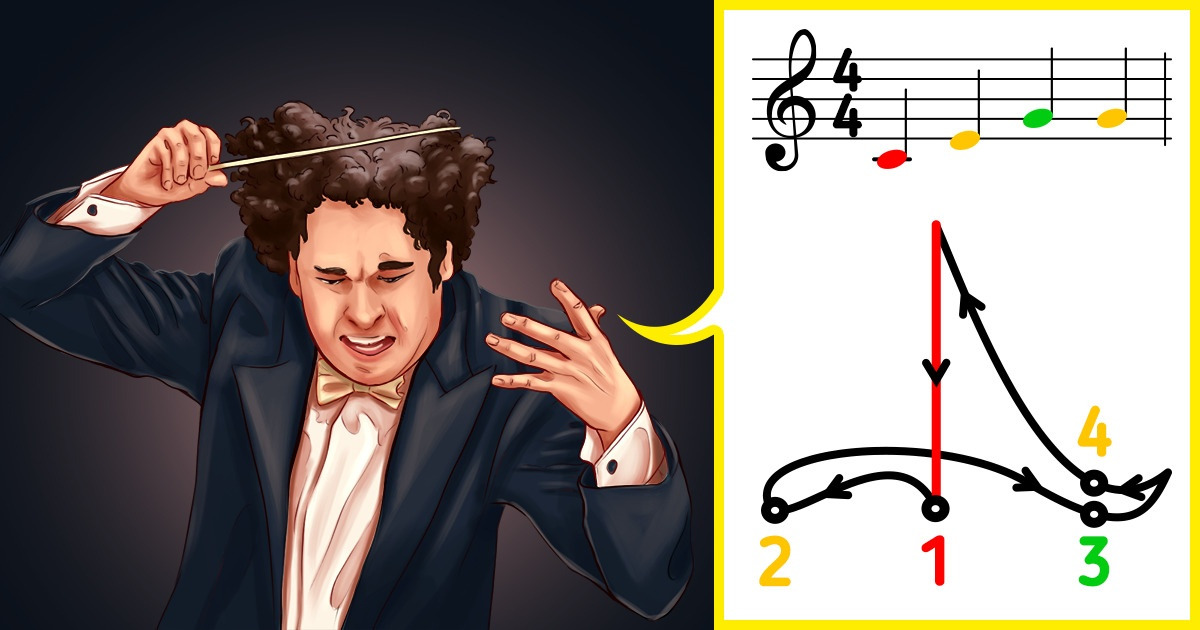
While watching a concert featuring classical music, you may wonder what all the conductor’s arm-waving means. So that you don’t have to ask yourself that anymore, 5-Minute Crafts looked into what a conductor’s gestures actually mean.
A. Why an orchestra needs a conductor
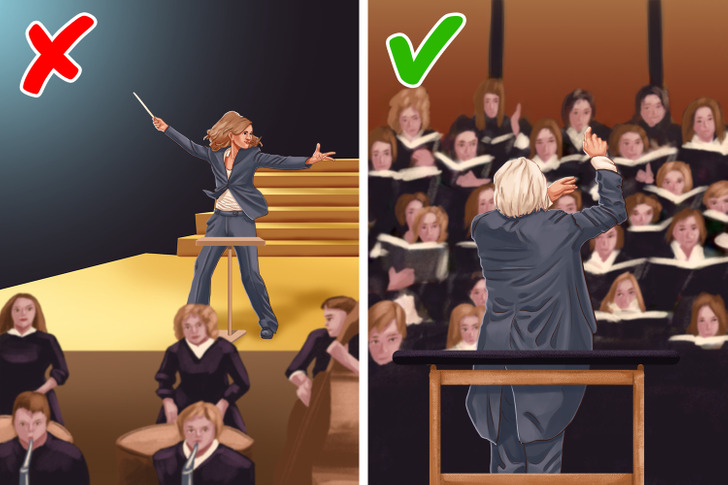
The orchestra would most likely be able to get through a fair amount of music without using a conductor, but there are a few important reasons why they need one.
- The conductor gives the tempo to the orchestra so that everyone can play at the same speed.
- The orchestra needs someone to show them clearly when everyone should start playing. In the orchestra, not everyone plays everything at the same time. Some musicians have to wait to get their turn to play so as not to lose the thread by counting alone. Instead, the conductor shows them when it is their turn because they have all the notes in front of them.
- The orchestra needs a person standing where everyone can see them: up front and central. And this person will direct them all to play properly. The conductor is also the one who stands away from the orchestra and can get an overall impression, making necessary adjustments to the orchestra.
B. What a conductor uses when conducting
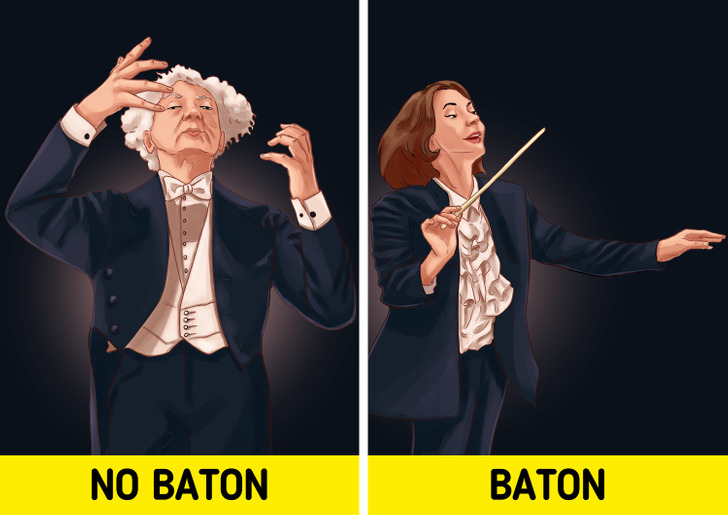
During the performance, communication between the orchestra and a conductor is non-verbal. For that reason, the conductor uses the movements of their hands, arms, body, as well as facial expressions.
Their posture is straight and relaxed. The conductor’s feet are at the width of their hips, and their chest and shoulders are open and relaxed, while their arms and head are not tense. The conductor, if they choose, may or may not use a baton. In essence, the conductor’s baton is an extension of the arm, and it helps them to lead an orchestra.
C. What the conductor’s hand gestures mean
1. Right hand
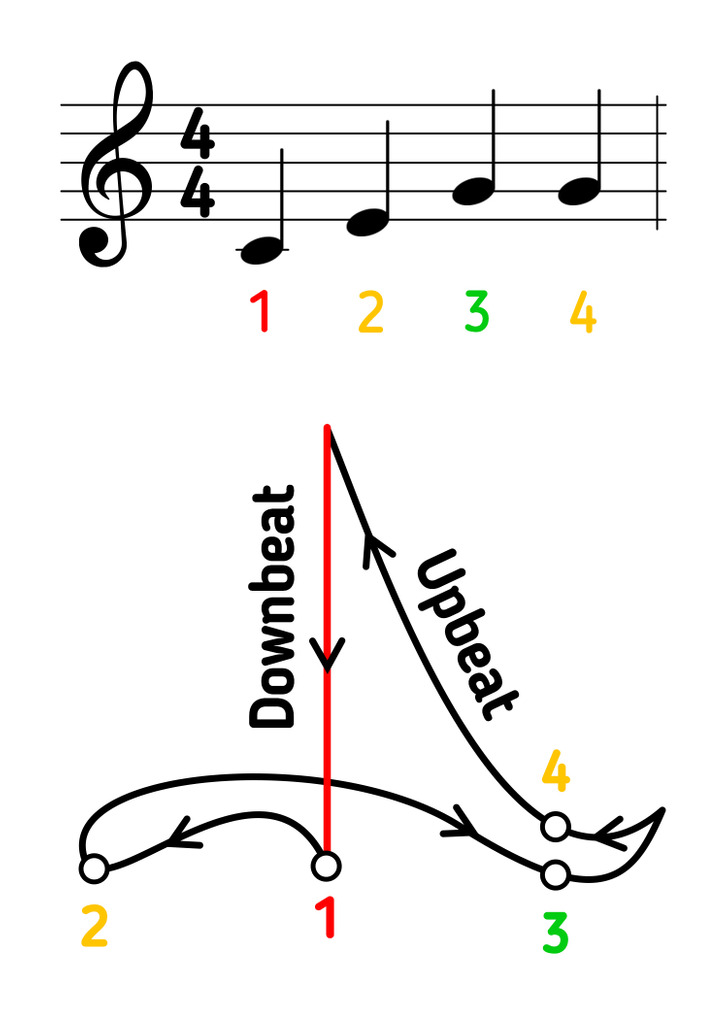
The conductor holds a baton in their right hand and shows the tempo of the music with it while maintaining a rhythmic pulse via time-beating gestures. One of the most important things that the conductor can show with their gestures is the beat, where the beat represents a regular pulse running through the music. For example, in pop or rock music, that pulse is given by the drummer. But in classical music, that beat is more subtle but still exists. And that pulse tends not to be altogether regular. Sometimes it slows down, sometimes it speeds up, and other times it stops altogether for a moment or 2. In classical music, in order not to sound artificial, the beat is constantly changing. The conductor’s task is to show the orchestra what is happening with the beat.
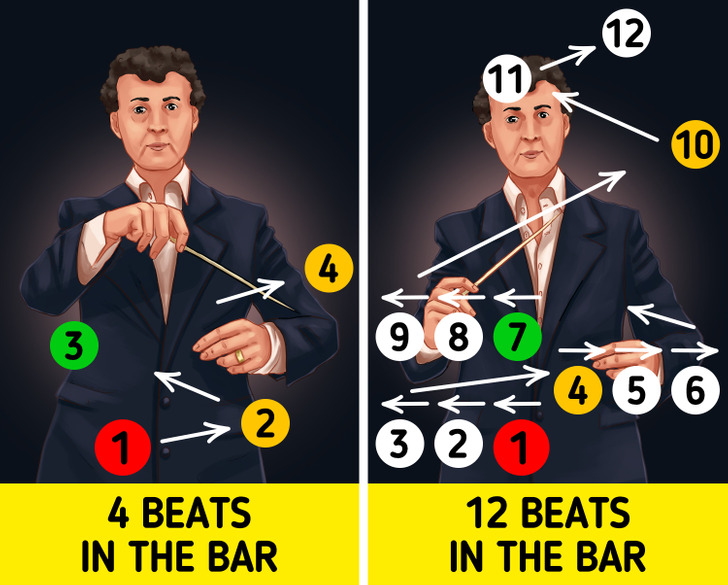
The number of beats between each of the important ones is referred to by musicians as the number of beats in the bar. A conductor uses a system of generally agreed patterns, which match these beats in the bar when showing the beat. The important strong beat is always given down and center, while the other beats are given a regular arrangement around that. There are 12 beat patterns in the bar. Beat patterns for 1, 2, 3, and 4 are commonly used in music. The conductor shows all the beats because not everyone plays in the orchestra all the time. The pulse in classical music is flexible, with small variations here and there. Musicians must see all the pulses so that any speeding up or slowing down, or any emphasis that happened with those other beats, don’t get lost. In case the piece speeds up too much, the conductor will show only the most important one. Here, we’ll show a pattern that is most commonly used in music.
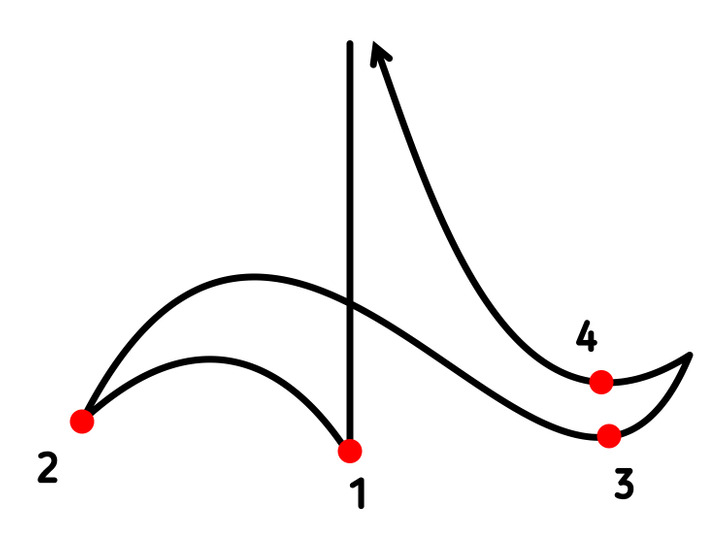
The most common beat pattern is 4/4. It means there are 4 beats in each measure, and a quarter note receives one count. Preparation for this pattern is the conductor’s movement of the hand upward with the baton, called the upbeat. It is the most important movement for the orchestra because it represents the preparation of musicians for the coming downbeat. This movement is silent because the first sound starts with a downbeat. The baton goes down and then moves left down, then right down, and up.
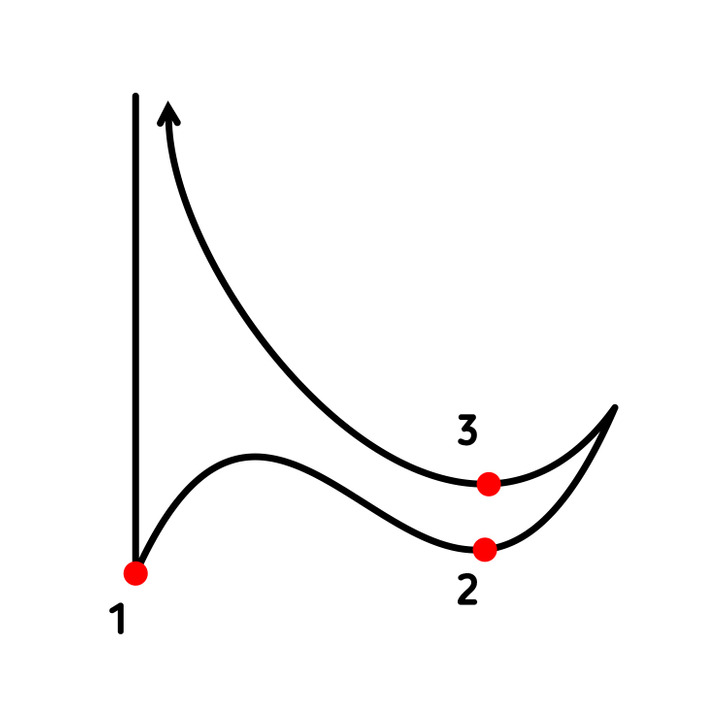
3/4 is also a common beat pattern in music. It means there are 3 beats in each measure, and a quarter note receives one count. Waltzes are on this beat, as well as a happy birthday. The conductor will prepare the orchestra with the upbeat. Then they’ll start the pattern with down, then right down, and an up movement.
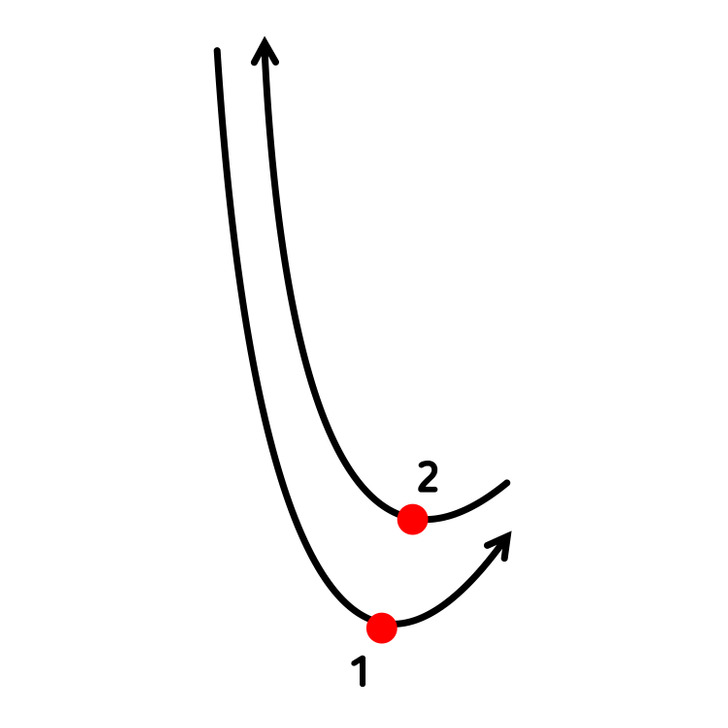
If the music is in 6, the conductor cannot conduct that fast, so they will use the 2. The bigger the pattern, it is always in 2. 2/2 means there are 2 beats in each measure, and a half note receives one count. For this pattern, the conductor will prepare the orchestra with an upbeat. Then they’ll lower the baton down, and after that, in a slightly curved line, lower it right down. Then, also in a slightly curved line, they’ll return it straight up. If the music is really fast, they’ll do the same motion, but from the wrist.
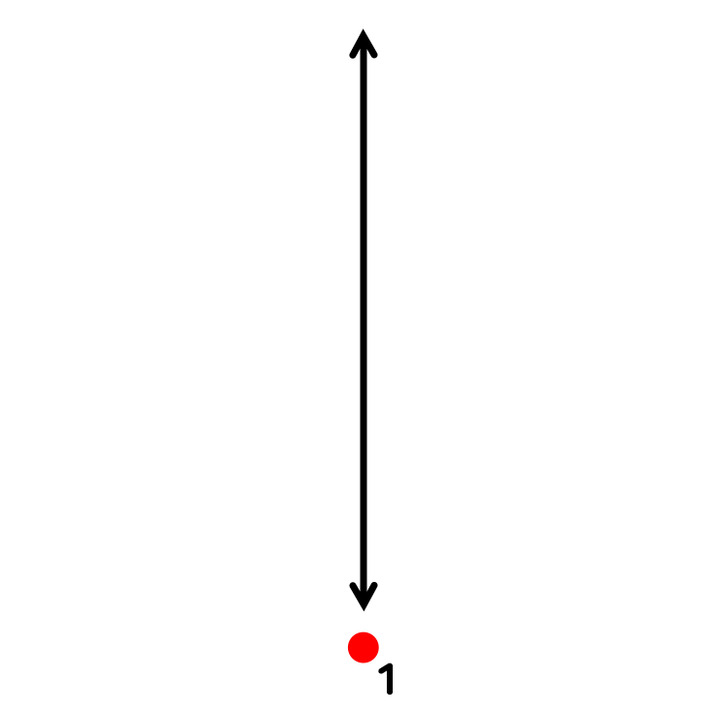
Beating one per bar doesn’t mean that there’s only one beat per bar. It can just mean that the music is too fast for the conductor to show all those beats. Conducting in one note is the most complicated pattern of all because the conductor must somehow show what is happening within that bigger beat. This pattern is performed so that the baton goes from top to bottom to top.
2. The left hand
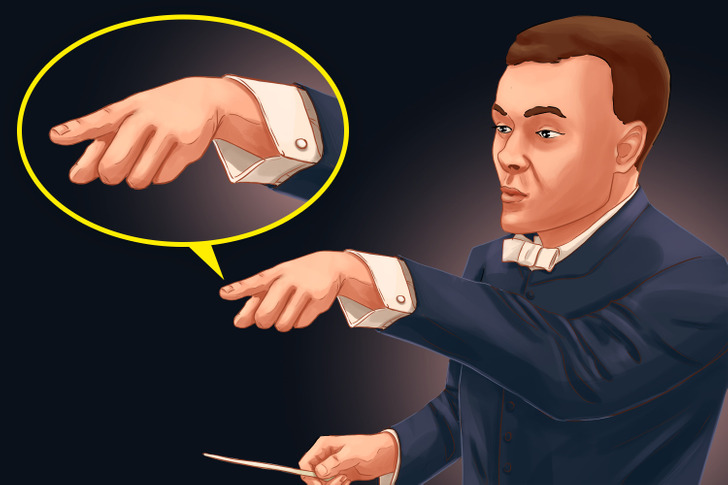
With their left hand, the conductor gives a signal when a section should enter the piece or when to exit a piece. For this, they use their index finger pointing directly at the person or the part they want to lead.
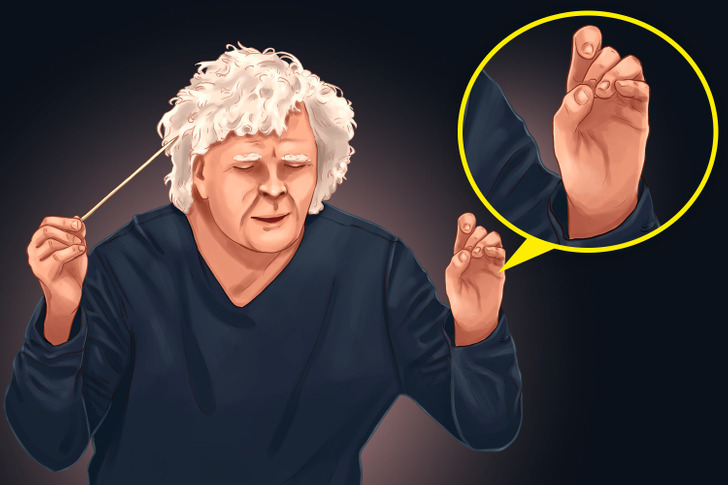
Also, with their left hand, they show the phasing out of certain musical movements. The conductor does this by moving the left hand in and then closing the thumb and the fingers.
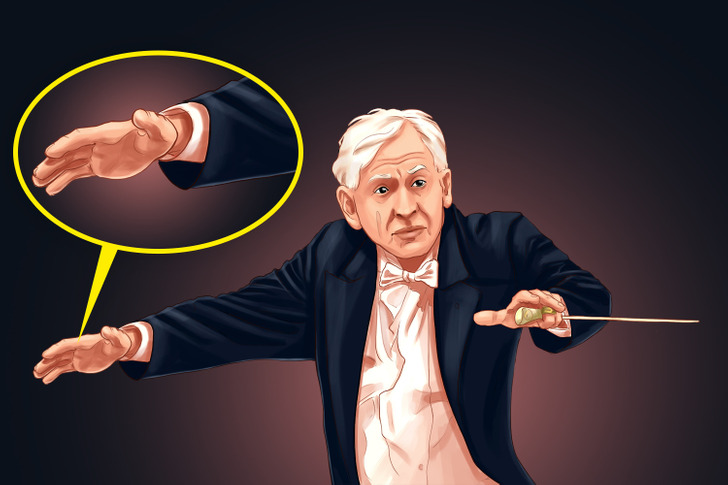
Another thing the conductor does with their left hand is influence the speed and strength of the musicians. When their hand is flattened with the palm facing downward, they want to get steady, smooth sounds.
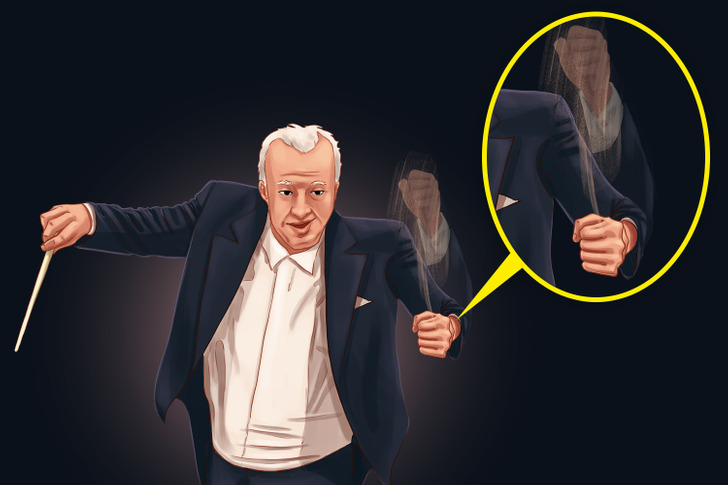
When they want the musicians to suddenly cut off the music, they will cup their hand and make a fast downward motion.